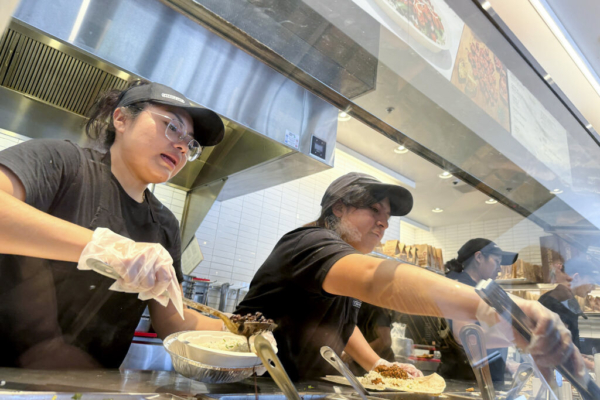According to a recent study by the Institute for Research on Labor and Employment (IRLE), the increase in the minimum wage for fast-food workers in California on April 1st has led to higher costs primarily borne by consumers through increased prices and reduced profits for restaurant owners.
The research indicates that the wage hike in April resulted in an average 18% salary increase for around 750,000 fast-food industry and related workers in California. This has caused fast-food bills for customers to rise by 3.7%, meaning a $4 food item increased by approximately 15 cents. The researchers noted, “Consumers are bearing about 62% of the cost increase.”
Restaurants are also heavily burdened by this. Researchers believe that the fast-food industry will also absorb some of the increased costs by reducing profits.
Michael J. Abatemarco, a professor of accounting, law, and taxation at Long Island University, emphasized that this burden on the food service industry is an inevitable outcome of significantly raising the minimum wage.
Abatemarco told Epoch Times, “Unless cost reductions in other areas of labor are able to offset these costs, increased wages will raise the cost of food service and compress profit margins.”
Milos Eric, co-founder and CEO of the restaurant service platform Oyster Link, also agreed with this sentiment. He informed Epoch Times via email that while raising California’s minimum wage to $20 directly benefits employees, it may also increase costs for consumers and pose challenges for restaurant owners.
He pointed out that restaurant profit margins are usually thin and may not have enough flexibility to handle higher labor costs. “To offset these increased expenses, many restaurant owners have raised prices, reduced staff, and are planning to increase automated services.”
According to data from the Gosnappy.io platform, in the first eight months of this year, the number of restaurant closures in California increased by 330%. This indicates that some restaurants closed their doors before the expected implementation of the minimum wage hike.
A report by the location data provider Dataplor stated that in September 2023, the month when the minimum wage increase was signed into law, the number of restaurant closures in California increased by 71%, while during the same period, similar states saw an increase of only 25% in restaurant closures.
Measures such as reducing staff and restaurant closures to cut labor costs should lead to a decline in restaurant employment, however, IRLE did not find evidence of a reduction in labor hours or the number of workers.
Meanwhile, a report released by Harvard University last week indicated that after the minimum wage increase in April, there was no decrease in employment in the fast-food industry.
The authors of the report stated, “After the significant wage increase for fast-food workers in California, we did not observe employers choosing to reduce staff or shorten shift hours to offset the increased labor costs. On the contrary, the weekly hours of California fast-food workers remained largely unchanged, and labor shortages seemed to alleviate.”
This has surprised labor economists. In a survey analyzing 100 minimum wage studies, economists David Neumark and William Wascher found that raising the minimum wage leads to job losses, especially for low-skilled workers, teenagers, and industries relying on low-wage labor such as the fast-food sector.
There are several reasonable explanations for why the minimum wage increase in California did not result in the aforementioned circumstances. Firstly, these increases occurred during a period of near historical lows in the unemployment rate, implying that employers may need to hold on to scarce labor, despite California’s unemployment rate still being higher than the national average.
Secondly, higher wages may help increase productivity, making fast-food workers more valuable to employers.
Lastly, restaurant operators may underreport employment statistics, which is a highly contentious issue in many states, especially in blue states.

